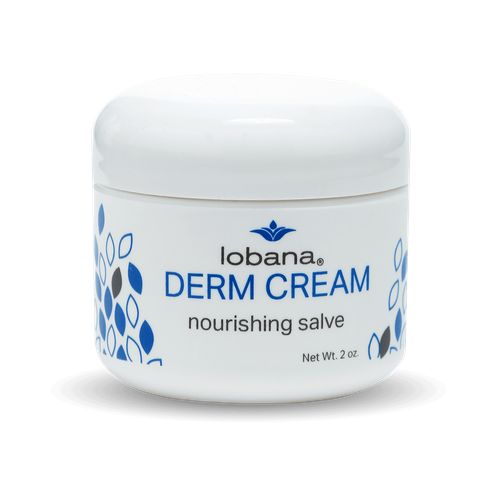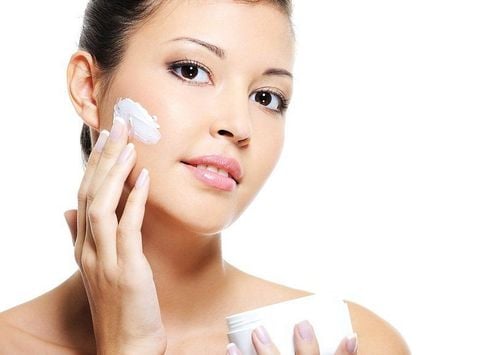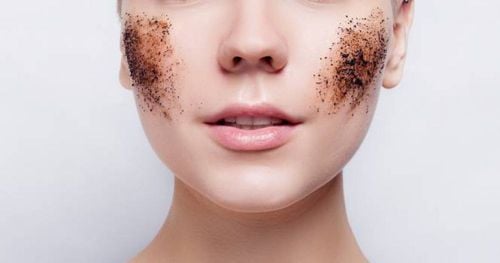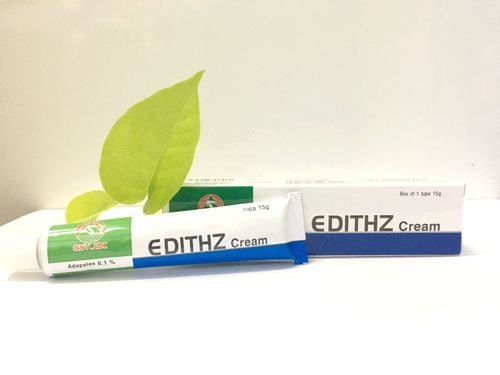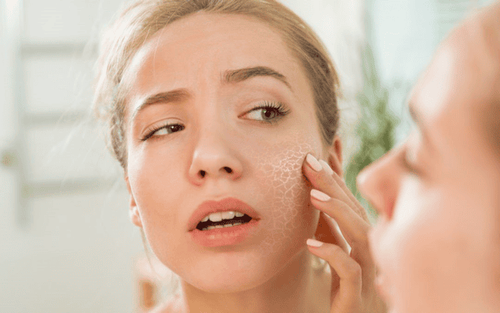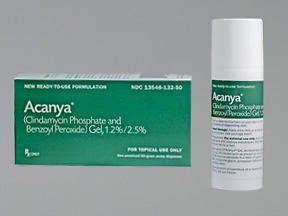This is an automatically translated article.
Exfoliation is a process of removing dead cells from the surface of the skin using chemical substances, granules or exfoliants. Depending on the skin type, there are different skin care methods. You can start by consulting with a dermatologist to get the right exfoliation method.
1. What is the effect of exfoliation?
Exfoliation is the process of removing dead cells from the surface of the skin using chemical substances, granules or exfoliants. Normally, human skin has a self-cleaning mechanism and removes dead skin cells, to make room for new cells after about 30 days or so. However, dead cells don't shed completely and this can lead to dry, flaky patches and clogged pores.
Exfoliation can help your skin look brighter and improve the effectiveness of topical skin care products by enhancing absorption. Regular exfoliation can also help prevent clogged pores, making skin less prone to breakouts. Besides, long-term exfoliation can increase collagen production. Collagen is the key to bright, vibrant skin. Besides, protein also promotes skin elasticity, minimizing the appearance of wrinkles and sagging.
SEE ALSO: How to safely exfoliate according to each skin type
2. How should you start exfoliating?
To start exfoliating, you should first find out what your skin type is, then find the right exfoliation method and finally choose the product to use and then proceed to exfoliate every day. week. Normally, you should only exfoliate 1-2 times to bring the best effect, do not exfoliate too much because it can make the skin dry and flaky.
In addition, you can choose when to exfoliate depending on your habits and personal preferences. If you feel your skin is dull in the morning, do the above scrub before starting the day. On the other hand, exfoliating at night can help remove residual makeup. However, you need to avoid exfoliating if you have sores or cuts on your skin.

Trước khi tẩy da chết, cần lựa chọn sản phẩm phù hợp với loại da của bản thân
MORE: Order of skin care products
2.1 Classification of skin types Skin classification can help you choose the right method, help bring the most effective and minimize the risk irritated. Skin is divided into 6 types including:
Normal skin: is the skin type that is airy and not easily irritated. People with this skin can try any exfoliation technique or product without experiencing side effects. You can then choose the method that works best and depends on your personal preferences. Sensitive skin: Skin that often stings or gets irritated after using new products. In some cases, sensitive skin is a symptom of an underlying medical condition and caution should be exercised when using chemical products to exfoliate the skin. If you are a person with sensitive skin, it is best to consult a dermatologist to choose a suitable exfoliation method, minimizing possible complications. Dry skin: Skin that is often flaky or dry. Dry skin often has to be used with moisturizer after exfoliating. Oily skin: is skin that is shiny and has a greasy feel to it. People with oily skin can often use chemical and physical exfoliants. Combination skin: is a combination of dry and oily skin. If you have combination skin, focus on individual areas and change products as needed. Chemical exfoliants can be used on oily skin one day and dry skin the next. Acne-prone skin: Skin that is prone to acne or has mild to moderate acne should choose products that contain retinoids, salicylic acid, or glycolic acid. 2.2 Choosing a method of exfoliation Physical method
Physical exfoliation is the use of hands or a support tool to rub on the surface of the skin and accompanied by exfoliating products. You can use a body brush or loofah scrub, both of which are popular. The biggest advantage of physical exfoliation is its ease of access. You can do it at home with just a cloth wipe or a sponge, pumice stone, exfoliating gloves, dry brush, etc. However, if done incorrectly, exfoliation Physical methods can sometimes irritate the skin and can cause transepidermal water loss. Alternatively, you can use it with a moisturizing oil to help minimize skin irritation and lock in moisture.
Chemical method
Chemical exfoliation is the use of different chemicals including hydroxy acids and retinol along with enzymes to renew the skin. The chemical method will probably yield better results than the physical method. However, chemical exfoliation can also cause skin irritation if not done properly. You should consult a dermatologist about the right chemical product for your skin. Some of the chemical products used include: Alpha hydroxy acids (AHAs): a group of water-soluble acids commonly derived from sugary fruits. These acids help slough off the surface of the skin to make room for new cells. Depending on the type of AHA, they can cause mild hyperpigmentation, enlarged pores, uneven skin tone,...
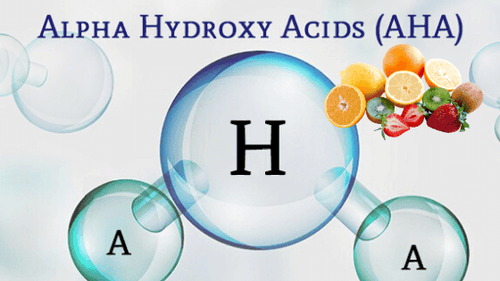
Acid alpha hydroxy (AHA) gồm các nhóm acid hòa tan có nguồn gốc từ trái cây
Glycolic acid: derived from cane sugar Lactic acid: found in milk and vegetables. Citric Acid: found in citrus fruits tartaric acid: derived from grapes malic acid: found in apples beta hydroxy acid (BHA): is a fat-soluble product, these acids go deep into the hair follicle to Drys excess oil and dead cells, helping to unclog pores. Therefore, beta hydroxy acid products are mainly used to treat acne and sun damage. Salicylic acid is the most popular BHA product, known as an acne treatment, but it can also calm general swelling and redness.
Retinoids : are a group of drugs derived from vitamin A , which work to minimize signs of aging , treat acne and soothe sun damaged skin . Retinoids work by protecting the skin from free radicals and promoting collagen production. Retinoids vary in concentration, some topical types include:
Retinol, Adapalene, Alitretinoin, Tretinoin, Bexarotene, Tazarotene
MORE: Tretinoin for acne: How to use, uses, effectiveness and effects extra
3. How to choose products
It is best to consult a dermatologist to be able to choose the right product for your skin type. Some considerations when choosing an exfoliator include:
Check the scope of use: Do not use body scrubs on the face. Body scrubs often have more serious consequences when used incorrectly and can tear thin facial tissues. Use one product at a time: Do not use more than one exfoliant at a time. Using multiple exfoliating products on the same area of skin can damage the skin, and lead to unwanted side effects. Switch products to suit your needs: You need to use different products as your skin care needs change. For example, if your skin becomes oily, consider using a product that contains activated charcoal.

Bạn nên chọn mua mỹ phẩm theo hướng dẫn của bác sĩ da liễu
Please dial HOTLINE for more information or register for an appointment HERE. Download MyVinmec app to make appointments faster and to manage your bookings easily.
Reference source: healthline.com



